One of my goals for this blog was to provide information on collecting trips and overviews of the facilities that I visit, specifically for entomologists. Finding information on research stations, habitats and the logistics of getting to and from these places is often hard to find, and are often birding reports, which are useful, especially for those that like to look at things that possess less than 6 legs, but don’t reflect the conditions that many entomologists are looking for. With that in mind, this will be the first of (hopefully) many trip reports/reviews that I plan to provide!
In the spring of 2007 I traveled to the Amazonian region of Peru and Bolivia with the University of Guelph Field Entomology course. We flew out of Toronto, Ontario, stopping in Houston, Texas to change planes and eventually landed in Lima, Peru.
All of our arrangements in Peru were taken care of by Inka Natura Travel, who also provided 3 experienced guides. The guides were very knowledgeable of the bird fauna, and were eager to learn more about the insects of the region. Although I didn’t deal directly with Inka Natura, they seemed to do a good job for us while we were in country with no delays and excellent accomodations in Lima and Puerto Maldonado.
After spending the night in a nice hotel in Lima (I’ve forgotten the hotel name, I didn’t keep as detailed notes for this trip as I did for my subsequent trips) we departed for Puerto Maldonado on a regional jet, quickly stopping in Cuzco (the jumping off point for Machu Pichu) to let some people off the plane. We arrived in Puerto Maldonado just before lunch and were quickly escorted to the river where we got into long, covered river boats for our journey into the depths of the Amazon!
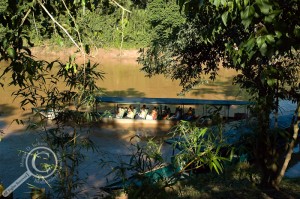 (Click on photos to view larger)
(Click on photos to view larger)
The boats were relatively comfortable (which was good as we were in them for a total of 12 hours ~5 hrs going in and 12 hours ~5 hrs coming out) and allowed for everyone to observe the local fauna along the river’s edge.
Because we arrived partway through the day, we spent the first night in a lodge situated on an oxbow lake about 3 hours outside of Puerto Maldonado called Sandoval Lake Lodge. This was a very nice, upscale lodge with all the amenities including hot water, wet bar, gift shop, excellent food, and well maintained trail network. The downside? It took more than an hours hiking through DEEP mud to get from the river to the lake.
It was worth it though as the habitat was fantastic and there was plenty of wildlife!
The next day we departed for Heath River Wildlife Center (HRWC) (12° 40′ S, 68° 42′ W) and spent most of the day on the water. HRWC is on the Bolivian side of the river, so you’ll stop at a customs shack along the river. Our guides dealt with the customs agents for us, and we were only delayed for a half hour or so. There is a “washroom” at the shack, and although not the highest class, it was suitable after a long day in a boat! We arrived at HRWC in the mid afternoon, after about 6 or 7 hours on the river.
The lodge itself is located directly on the river with easy access to the sandy shore if you’re interested in skimming for aquatic insects (the water level is extremely variable and changes rapidly however, so be careful). Depending on water level, there was a sandy beach on the Peruvian side of the river where the lodge staff would play soccer and where there may be a chance to look for sand-associated insects.
Continuing with habitat, there was an excellent network of trails that were all very well maintained and which traversed a diversity of regions in the area. In addition, there are a number of clay licks in the area and blinds that allow for people to sleep over and observe birds and mammals over the course of the night. The rainforest habitat was excellent and both the vertebrate and invertebrate fauna was diverse and found everywhere you looked (see my earlier posts on the insects and verts from this trip for examples). The guides and staff were very accommodating with our group and our collecting habits, and were interested in learning about the insects that we brought back.
Although a bit of a hike (~1 hr), HRWC features access to a unique habitat that you might not expect to find in the middle of the Amazon, the pampas. Although appearing very similar to the grasslands of Africa, it was actually quite wet and muddy. Because of the hike and the fact that it gets extremely hot during the mid-day sun, we didn’t spend much time on the pampas, and the only insect activity I saw during the early morning visit I made were honeybees and some syrphids, but I suspect this could be a very interesting location to place malaise and pan traps. There is also an observation platform in one of the few trees, allowing good views in all directions. Thanks to Adam Brunke for the pampas photos.
So there is plenty of excellent habitat to spend your days in, but what about living conditions? HRWC is not a research station but rather an eco-lodge, so the accommodations and amenities are excellent:
Private screened-in cabins with 2-3 comfortable, high-quality beds including mosquito netting and 3 piece bathroom with hot water
Large screened-in dinner hall with sitting area and full bar service
Screened-in hammock cabana
The food and service at the lodge was excellent, if not a bit repetitive after 2 weeks (roasted chicken and rice was the main dinner feature, although they did accommodate vegetarians and people with specific dietary restrictions). The staff was willing to pack breakfasts and lunches if you anticipated being in the field for the day as long as you requested it the night before, and the waiter provided excellent service. Cold, bottled water was available 24 hours a day, as were fresh fruit and packaged snack foods. I must note that the banana-leaf wrapped lunch that we were provided on the boat ride from Puerto Maldonado resulted in more than 75% of the class developing a bad case of food poisoning that caused 2-3 days of uncomfortable and frequent washroom visits, but this was the only time where food was an issue.
The HRWC is powered by generators during the morning and evenings until 11 or so, allowing for plenty of time to charge batteries, laptops, etc. The lodge had intermittent radio contact with Puerto Maldonado, but it was far from reliable it seemed, resulting in essentially no contact with the outside world. Keep this and the 12 hour ~5 hr boat ride out in mind if you consider yourself a medical risk. Unfortunately we blew our halogen bulb the first night out (I think it was 220V on the outside outlets, although they had North American standard power bars in the dining hall for charging purposes), but I’m sure that they would be willing to keep the generators running a little later if asked. HRWC is extremely remote with very little to no light pollution, so I would expect night lighting to work extremely well.
Finally, we were in the jungle from April 28 until May 11 and experienced almost perfect weather the entire trip. Being in the southern hemisphere, it was the tail end of the summer rainy season, and I can only remember it raining for a few hours on one or two afternoons. Day time highs were likely in the 30°C range with nearly 100% humidity most days. Unfortunately, 2 or 3 days before we left, a large cold front entered the region and dramatically changed the weather! Day time highs were extremely low, feeling around 15°C perhaps, and with 100% humidity still, causing some chilly days and nights and a complete drop off in insect activity. Despite the chilly ending, I couldn’t ask for better weather!
Overall I would highly recommend the Heath River Wildlife Center, both as a vacation spot and a destination for insect collecting and I would love to go back some day!
Habitat: 10/10 – diverse habitats, easily accessible, pristine environments
Insect Fauna: 10/10 – excellent diversity, new species found (see earlier posts for examples)
Vertebrate Fauna: 10/10 – many large, rare mammals seen, excellent bird diversity, comfortable blinds for observing wildlife
Accommodations: 10/10 – comfortable, roomy, space to work and play
Food: 8/10 – good quality food, clean water, vegetarian option, small selection, excellent fresh fruit
Service: 9/10 – clean rooms, excellent wait service, excellent and knowledgeable guides, fair understanding of English
Travel to get there: 9/10 – simple flights, excellent hotels, safe areas, amazing boat trip into lodge
OVERALL: 10/10 Highly recommended
Links to my photos from the trip:
Vertebrates including macaws, jaguar, and amphibians and reptiles
Spiders, dragonflies and Orthoptera
Do you have a trip report from a recent collecting trip and wish to share it with others? Feel free to contact me and write up a guest post to help other researchers get the most out of their travel dollars!EDIT May 7 2010: After further reflection thanks to commentators below, I realized I had over-estimated the boat ride in & out, which in fact are closer to 5hrs each way. Sorry for any confusion my memory may have caused! Also, I’ve added links to the posts which highlight the photos I took on the trip.

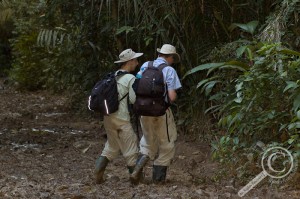
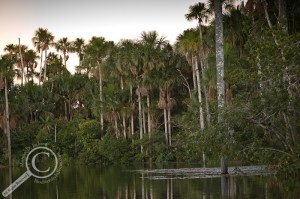
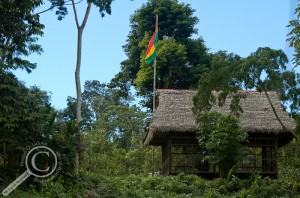
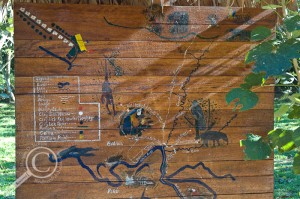
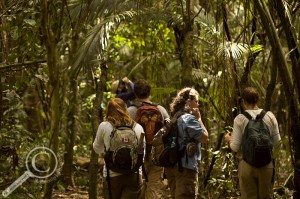
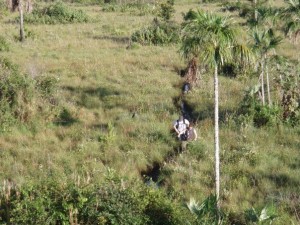
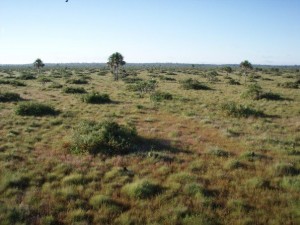
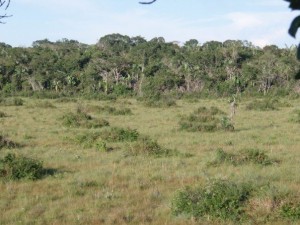
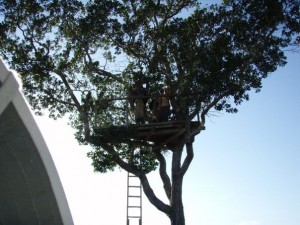
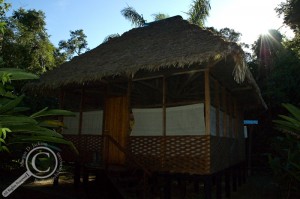
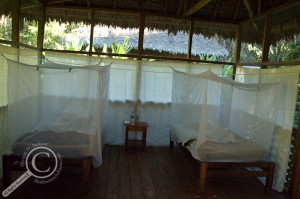
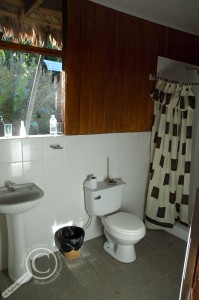
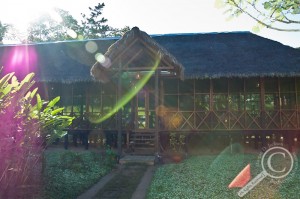
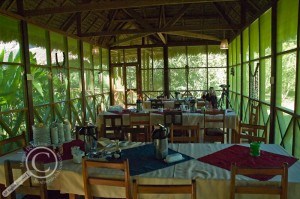
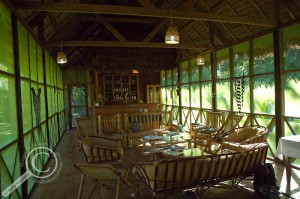
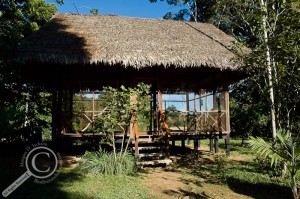
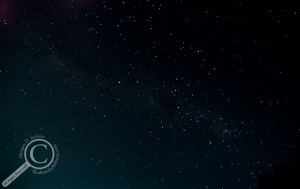
Good story Morgan. I was wondering if it would be a good idea to send an email and link to the HRWC and maybe Inka Natura Travel with the hopes they might provide a link to you blog from their web sites. But then again maybe a Google search for the HRWC will pick up your blog anyway!
Dad
Thanks for the vote of confidence Dad! I think I’ll leave the review in the hands of Google and hope that anyone interested in traveling to this fantastic location is directed to this post (which is currently the 14th ranked link when “Heath River Wildlife Center” is googled, and 3rd when someone is looking for a review)!
I was investigating HRWC but your 12 hr boat trip both ways really scares me! Why did it take so long? All of the literature says about 5 hours. I even called and was told 5 hrs, 6 at the most. So did you have problems or am I being naive by thinking that the people running inkanatura are telling me the truth? Other than the length of time required for travel, were the boat conditions adequate? The main reason I want to go is to see the macaws. Was the clay lick impressive and did you see many? Can you get close enough to take good pictures?
Hi Dana,
I wouldn’t worry too much about the boat ride. I may be wrong (or they may have gotten different boats since I was there) but I recall it being an all day boat ride in and out. However, the boat ride was one of the most interesting and rewarding parts of the trip. We saw several large mammal species along the river, many bird species, and plenty of caiman, all close by and photogenic (the Rio Heath isn’t very wide). The boat was very comfortable with a nice covering to keep the sun off, comfortable benches that allowed great views, and were nice for laying down on for a quick nap! We were required to wear a life jacket at all times, but with the excitement of getting into the jungle, I hardly noticed it!
As for the macaws, we easily saw 15-20 pairs of red and green macaws, plus a few pairs of blue-and-yellow macaws, and plenty of chestnut-fronted macaws, as well as other species of parrots that I’m not sure of. The distance between the blind and the clay lick varies I believe depending on currents, but we had pretty good views when we were there. All the macaw photos I took were from the blind using a 300mm lens on a DX body (equal to a focal length of 450mm on film). This is about the same amount of magnification that most of the higher end compact cameras get (not the little pocket cams, but the ones that look like an SLR without the removable lens). Added to the wonderful fruit breakfast and seeing the sunrise over some pristine habitat on another continent, I’d whole-heartedly recommend a trip there!
Thanks, Morgan, you’ve convinced me. Now I can’t wait to go! Awesome pictures! I have a SLR Nikon D-80 and a 70-300mm zoom lens. I was trying to figure out which lenses to take without adding too much weight. Did you carry around a tripod? I don’t want to have to keep up with too much stuff, but I really want to get some good photos. I am definitely an amateur photographer so any advice would be appreciated. Thanks again for info about the boat trip.
I’m glad that you’ve decided to go, I’d go back in a heartbeat given the chance! That’s pretty well the same set up that I used (D70s, 70-300VR). Since my main focus was insects I also had the 105VR Macro lens. I generally don’t bother with a tripod, and in the clay lick blind there is a big ledge that you sit at, so perhaps a beanbag would be all you’d need (although I hand held all my shots). You might consider taking a wide angle lens as well for some night/star shots. It will be 100% dark with no light pollution, and if you manage to go during a new moon you won’t believe the stars that you can see! I tried a few shots just by setting my camera down on a plastic bag on the beach propped up with a rock, but I would consider taking a small tripod if you decide to give it a go. Have a great trip and let me know what you think, and a link to your photos if you have a Flickr account or website!
One more thing, during the day when you’re exploring around the jungle you’ll definitely need to bring a flash as the canopy cuts out most of the light. As I mentioned in the article it was no problem charging batteries in the great room each evening, so take as many shots as you can manage!
Thanks for the heads up about the flash; I hadn’t thought of that. I just bought the 105 VR and took it out this weekend for photos of Texas wildflowers, which are absolutely gorgeous this year. The pictures turned out great too! I also have the 18-200VR which is my favorite all-round lens for most photos. Did you have any trouble charging batteries at other places in Peru? We’ll be there for 2 and half weeks and was wondering if I should get a 220/110 converter?
When I was there I spent the entire trip at Heath River, so I can’t really comment on other places, but I would suggest taking it along just in case. From other trips to South America, outlets tend to vary between 110 and 220, so having the ability to use any outlet would be a wise choice I think. It might be a little more weight in your bag, but preventing getting skunked with dead batteries on the trip of a lifetime outweighs any extra costs I think!
Morgan, maybe I am being even denser than usual, but on first glance, I did not see what your macaw photos looked like. The ones you would have taken from the floating blind. I was there at HRWC in late March 2010, and the floating blind was being anchored at about 35-40 m from the lick face itself, which allowed for quite good photos. I am a macaw biologist (author of the Jan 1994 cover story on macaws in National Geographic) and know well the major macaw clay licks in Heath, Tambopata, Manu, and Lower Urubamba and can compare the distances for photography at each. At the moment, for a lick with the large amount of activity that the Heath one normally has, it is not only the cheapest of all the major macaw licks to get to from a jetport with regular flight service, but it also is the closest of the major licks to the observation blind or hide. For comparison, the large lick in the upper Tambopata (which I was first told about in 1985 by indigenous guide Victor Yohamona of Puerto Maldonado) normally is watched from 150-190 m away on the opposite side of the upper Tambopata River. That distance is too much to allow decent photos, but works for viewing with a good spotting scope.
The lick at Blanquillo (not far from Manu Wildlife Center, http://www.manu-wildlife-center.com) is more than 80 m from the large, elevated blind there.
A distance of 40 m or 38 m is quite acceptable for getting good views and good photos of the Heath lick.
Oh, and a comment about how long the boat ride takes from Puerto Maldonado. I have done that ride in 4-5 h one way, and 4.5-5.5 h is the normal amount of time for the one-way trip if the Heath River is not very low and very dry. The Heath can get quite low and quite dry, and thus hard to navigate fast, in the period of 20 July to 15 October. Normally that is the only period in which your travel on the Heath portion of that trip can be quite slow. During that low water period, if the Heath is really quite dry, then the entire one way trip from Puerto Maldonado to the Heath River Wildlife Center or vice versa can take 2-3 h more (!!), thus bringing the total to 6-8 h. I have never heard of anyone taking 12 h to do that trip one way, or if that happened, it must have been with a heavier, lower-riding boat years ago. I think 12 h is impossible. As I say, normally it is 4.5 to 6, let’s call it.
All the best,
Charles Munn, Ph.D.
You can watch the heath lick from 40 m or so, and that is a good distance for good photos! Where are your macaw photos, Morgan? Perhaps they are buried a bit deeper in the blog?
the river trip from Maldonado takes 4.5-5.5 h most of the year, but from 15 July through 30 Oct, the Heath River can be so low and dry that the trip then take 2-3 h more (!!!). But the Heath is a beautiful river, so even a slower trip on that river is fun.
the lick at HRWC is the fastest and cheapest of the large macaw licks to get to–by far–and much closer to you than the large lick that I studied in the upper Tambopata (they watch that lick from 150-190 m away in most years).
Charles Munn, PhD
Macaw biologist
Author of the cover story on macaws in January 1994 National Geographic
camunn3@gmail.com
i should clarify—I first invented and designed the floating blinds in the 90’s, used them just for me in macaw research in Manu, Tambopata, and Heath, and then tinkered with them to get them right. The Heath River Wildlife Center currently has the only floating blind in service at a major macaw lick. Of the 100 macaw licks that I now have documented, the Heath is one of the two or three best in the world for photography, and it is by far the most economical and fastest to get to from a major jetport like Puerto Maldonado.
I have been pushing the folks at HRWC to make sure that the blind always is anchored at about 40 m from the lick face, as the views and photo opportunities are MUCH better from that distance than from distances of 80 m or more than 100 m! When I was at the HRWC in March 2010, the blind was anchored at that distance and our photo results were excellent.
In fact, we found that at that distance, with the newer digital cameras, you can get photos of the Red-and-Green Macaw facial lines that permit you to build a dossier of the unique faces of each bird. I first did this in Manu in the late 80’s and early 90’s and found that about 500 different R&G Macaws were using one large lick that I was studying there. I am planning to start a project now at the HRWC lick to allow us to build up a complete dossier of all the individuals that visit that lick.
On a big day at the Heath lick, there can be more than 100 R&G Macaws present at one time, with 30-40 on the lick face and the rest coming and going from trees just above the lick. A more normal day at the Heath lick features 30-60 of those macaws coming in.
The great thing about the Heath lick compared to other licks is not only that it is not too tall, and so the birds are not too high above you, and it gets direct sun in the morning, which makes the colors of the birds pop out at you!
Many other licks do not have direct sun in the morning, but rather are in shade, which means 2.5 fewer f-stops of light to work with.
I invite questions or comments about the macaws and the Heath lick, as we will want each visitor to contribute macaw face photos to help build up the dossier. There should be about 300 or 280 different R&G Macaws using that lick, but only about a third of them or a fourth of them should normally come to the lick on a given day. Roughly speaking, that is the general pattern of lick use by R&G Macaws—for individuals to come to a lick every second or third day. So the total number of individual birds using the lick over a month or a year should be about 2-3 times the number of the highest count you have at the lick on any day of the year. As 100 was about the highest count at the Heath lick in the past year, that should mean 200-300 individuals using the lick regularly. We do not know for sure yet, but we do not believe that birds generally use more than one lick.
Of course, these results are just for R&G Macaws, but the lick is visited by a bunch of other species, including Chestnut-fronted Macaws, Blue-headed Parrots, Mealy Parrots, Yellow-crowned Parrots, Orange-cheeked Parrots (what a stunner!), Dusky-headed Parakeets, other small species, and, UNIQUE IN ALL THE CLAY LICKS OF THE WORLD as far as I know, PEACH-FRONTED PARAKEETS. The Peach-fronts seem to come in to the lick from the direction of Bolivia, to the east, and likely are coming all the way from the extensive pampas that are one of the unique features of the HRWC.
More on the Heath Clay Lick Project as we make progress.
Oh, about 1 out of 4 of the trips to the HRWC see Jaguar on the banks of the Heath River. In March 2010, I spent 2 hours watching a Jaguar in the bushes and on the riverbank about 15-25 m from my boat. (!!!). This makes the Heath one of the best places in all the Amazon to see Jaguars—tied with Manu River, which also has a hit rate of about 1 in 3 or 1 in 4 trips seeing a Jaguar on the riverbank. (of course, at our Jaguar camp in Pantanal, Brazil, we have 1.7 Jaguars seen per day, and a 91 percent hit rate per day for that big cat).
All the best,
Charles Munn, Ph.D
camunn3@gmail.com
Hi Charles, thanks for stopping by and and for adding so much incredible information about the blinds, clay licks, and macaws!
When we were there (which was in May 2007) I think that the blind was closer to 50 m away than 30. You can view my macaw and clay lick photos here, which were all taken with a 300mm lens, and I’ve added links to the review to my other photos so people can find them in the future! The day that we were there the red-&-green macaws were a little more scarce than usual according to our guides, but still fantastic to see!
The fact that you can use the facial lines of the macaws to identify individuals is fascinating! I didn’t have the lens to get quite close enough for headshots, but with a 500mm+ lens I can easily see the HRWC blind as being a great place for it. Good luck with your research!
Also, after thinking some more, I am feeling more and more that our boat ride was closer to the 5 hour mark than the 12 hour mark. I’ll blame that on being excited, but you are definitely correct, leaving HWRC we left about lunch time and arrived in Puerto Maldonado as it was getting dark around 5-6. Sorry for any confusion! I think on our trip in one of the people in our group was having some digestive issues that caused us to take some stops along the river which delayed us a little, but on reflection no where near 12 hours. I’ve updated my review to reflect this. Thanks for more info and for making me reflect more thoroughly!
Again, thanks for taking the time to share so much about your ongoing work with the macaws and some history behind the blinds of Peru! A true goldmine of information!
hey, Morgan. Am I confused AGAIN, or did you hardly even mention (or not mention at all) that you saw a JAGUAR on the banks of the Heath River and put the photo in your photo link here under “vertebrates, including macaws, jaguar….” I would have imagined that a lot of readers would be pretty interested to hear from you early on in the blog that you saw a Jaguar, as I just said you have a 1 in 4 chance of seeing one on a trip to Heath, and you were one of the lucky ones, then. (you realize that you have a 1 in 1,000,000 chance of seeing a Jaguar in Costa Rica, and about a 1 in a 1,000 (some reports say 1 in 17,000) chance of seeing one in the Cockscomb Reserve in Belize. Cockscomb, which is 40,000 hectares (100,000 acres). For comparison, the HRWC private reserve is 25% as large as the entire Cockcomb Reserve, but, also, the HRWC reserve is surrounded on the south and west by two huge reserves (the Madidi National Park and the Tambopata Reserve complex). The Madidi NP is 48 times larger than Cockscomb Reserve, while the Tambopata reserves are 35 times larger than the Cockscomb Reserve. No wonder people see so many Jaguars on the Heath, without any special effort. Tons of wilderness and no hunters! Here is a comparison that probably says it all: Madidi and the Tambopata reserves combined add up to 3.3 million hectares, an area that is 50% larger than the entire country of Belize. (Belize is 2.3 million hectares).
All the best,
Charles Munn, Ph.D.
Hi Morgan
I just returned from Peru, but your review/ stories have me wanting to get to S. America. Bolivia is still a country I have not gone to.
Here are my recent adventures to the Amazon (including the clay lick) … huge trees of the Tombopato Reserve and … the macaw clay-lick on the Tombopato River of Peru hope it adds to discussion